- Administrator
- Albums and Singles
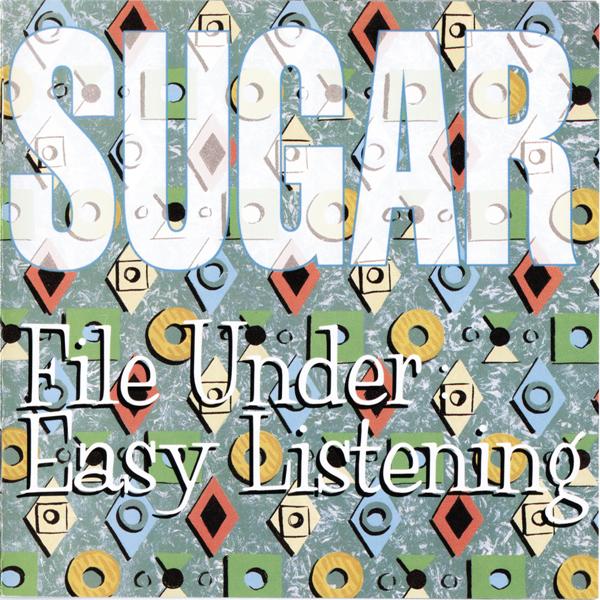 Once again a remaster job with meticulous attention to detail along with a set of bonus material and copious first-hand accounts have allowed me to appreciate a release much more than I originally had. Sugar's last album can still be a difficult listen but I think I'm ready to love it.
Once again a remaster job with meticulous attention to detail along with a set of bonus material and copious first-hand accounts have allowed me to appreciate a release much more than I originally had. Sugar's last album can still be a difficult listen but I think I'm ready to love it.
Edsel
After a whirlwind success in 1992 and 1993, the three-piece Sugar were burning out. Life on multiple continents had been taking its toll on the group, despite the fact that it consisted of three seasoned veterans of the road. Confident from the success of Copper Blue, the band thought they could do the album themselves and attempted to record in an Atlanta area studio made famous by Hole and Smashing Pumpkins. It was a bust and the recordings were scrapped. They picked up again outside of Austin and once again employed a co-producer, recorded in a reverse direction from Copper Blue (described as top-down instead of bottom-up: drums were recorded last instead of first this time), and the result has some pretty damn awesome moments.
I remember how a few Mould/Husker/Sugar fans and I would often disagree on FU:EL, on which are the standout songs or how good the album actually was. Eighteen years later, reading Bob's reflections on the album in the liner notes, the picture becomes a lot clearer: side A was the "rock" side, side B was the "country" side, and the fictitious side C, or the "b-sides," were something more of a continuation of the Copper Blue vibe.Back in 1994 I remember gravitating more to the more emotional side of the album, with the kicking, screaming, bleeding heart of a performance on the closing "Explode and Make Up," and the simple yet catchy hit single "Believe What You're Saying," but with the remaster I can feel the depth of the rock tunes like "Gee Angel" and "Granny Cool" much more in my gut than I recall. "Your Favorite Thing," however, remains a favorite both back then and now, even though it's admittedly a ripoff of My Bloody Valentine's "Blown a Wish."
Songs from the B-Sides like "Frustration" and "And You Tell Me" make me wonder how they didn't end up on the original record, but it was clear that the album should have stood at 10 songs. Everything is included on this reissue along with the "Campfire Mix" of "Believe What You're Saying" along with the show recoreded in November 1994 in Minneapolis, originally released as the bonus second disc to the Besides compilation. Once again a DVD is included of promotional music videos from the album as well as TV performances. In all honesty, one DVD could have fit all the material from these three reissues, however not having them, such as the Merge versions of the reissues, is a far greater insult.
While I love FU:EL at this point, it still doesn't hold a candle to Copper Blue, an album which was a relentless repetition of knockout caliber punches. FU:EL has some fantastic moments and brilliant songs but it can't measure up as a whole. Rather than fight to recapture those moments, the group allowed numerous external factors to win: Bob Mould relocated to Austin and David Barbe bowed out to keep up with the increasing demands of his family. It also didn't help that a big feature in Spin Magazine came out, focusing more on Mould's sexuality than the new album, Creation was bought by Sony, Kurt Cobain died, and the tastes of the music-buying public was shifting. I can't imagine Mould or even a reformed Sugar could play another stadium tour however the fans from pre- and post- Sugar will most certainly remain loyal.
Read More
- Administrator
- Albums and Singles

With both albums out of print for a number of years, Michael Gira has (somewhat surprisingly) not only saw fit to present these two in their original forms, but as a deluxe vinyl box set (or less deluxe CD), expanded with a disc of period-specific rarities and outtakes. What was originally a drastic departure from what everyone expected from Swans is now somewhat less so, and with almost an additional 25 years since White Light from the Mouth of Infinity, their place in Swans' impeccable catalog makes perfect sense. Even removed from that, however, they are an exceptionally strong pair of American folk influenced albums that have lost none of their force or impact to this day.
The second major phase of Swans' career (roughly from the late 1980s to the mid 1990s) has always been a contentious one, for artist and fan alike.Many decried the shift away from the violent, seething, belligerent sound that characterized seminal records such as Cop or Filth, into a more melodic one as an example of the now-novel concept of 'selling out."The move towards actual song writing and melody has also been blamed on Jarboe's increased presence in the band.Gira himself had spoken dismissively about these albums in interviews, and during the first reissue campaign in the late 1990s, these two albums were cherry picked and mixed with rarities from the era as the tellingly titled Various Failures.
In hindsight, the confusing birth of these records is understandable.The band's more song-oriented focus started in earnest with 1989's The Burning World, a record that has all but been disowned by the band.Which, I can understand.I personally do enjoy that record quite a bit, but it does not sound like Swans before, or after.Surely the heavy-handed influence of a major record label infringed on the creation of the album quite a bit, as did the notable (though likely well intentioned) production by Bill Laswell and his cadre of session players.
The follow up, White Light From The Mouth of Infinity, was in a way a return to form.The no wave aggression and blunt force musical approach was dispatched in favor of songwriting that focused more on melody than just mood. In addition, there was an expanded instrumental template that heavily featured acoustic guitars as well as an increased use keyboards, all with Gira singing, rather than barking and bellowing like a drunken thug.But the intensity had not waned at all.Perhaps it is clearer now in the post-My Father era that the purer approach and development as songwriters was actually instituted nearly 25 years ago.
The lyrical content and associated themes were still there as well.Those early albums and singles were seething with disgust and hatred, much of which was directed inward.A song like "Better Than You" may not be as aggressively blunt as "Cop," but it is anything but a romantic ballad.Additionally, "Failure" is as self-loathing as music can possibly can get, but presented in a country-tinged song rather than pummeling riffs, a contrast that makes it an even stronger piece.Even when the lyrics seem to drift more into conventional territory, such as on the more ballad-like "Love Will Save You" or "Miracle of Love," the arrangements and dramatic presentation come with such a force that it rivals the intensity of any of their more violent moments.
Love of Life, which was released just a year later, does not stray far from the style of its predecessor, unsurprisingly given the relatively short span of time between their creation.The bombast of "In The Eyes of Nature" and "The Golden Boy that was Swallowed by the Sea" could have appeared on White Light and fit in perfectly."Her" may feature a similar stripped down acoustic sound akin to "Failure," though with uncharacteristically intimate lyrics and calmness that results in one of the band’s most sensitive songs of their entire career, at least before the explosive second half.
The title song and "Amnesia" stand out as two fast tempo songs of grandiose rock music, which I mean in the most complimentary of ways.Both feature rapid fire, almost martial rhythms that are like the band giving a nod back to the industrial edged sound of the Greed/Holy Money era, but with layered keyboards and guitar stabs that bring back the dissonance without having the band repeat themselves.One notable development here is the introduction of the short, untitled interludes between some of the songs, a unifying compositional strategy that would be used again to brilliant effect on Soundtracks for the Blind.
The third rarities disc (presented on CD within the vinyl box as well) is a mixed bag.Many of the b-sides and other songs had appeared previously on Various Failures, so they are nothing revelatory.That’s not to dismiss them by any means:"Picture of Maryanne," for example, is even more delicate than "Her" and is just as achingly beautiful now as ever, and "You Know Everything" is still as hard hitting as anything that made it onto the two previously discussed records.The extended mixes of both "Love of Life" and "Amnesia" are here as well, though the latter is a minute or so shorter than the original single version for some reason.While both take the songs in new and different directions than their original forms, they both heavily feature loops and repetition characteristic of extended dance mixes that dull the impact of the original, more succinct songs.
Five songs from the side project Skin's Ten Songs for Another World album show up here too, which is an odd choice given that they technically are not by Swans (just Gira and Jarboe), and they also appeared previously on Various Failures.Additionally, there is only a small bit of live material extracted from the out of print Omniscience and Anonymous Bodies in an Empty Room albums; the inclusion of more would have strengthened this as a compilation."The Unknown" is the only song that I believe has not been available prior; an otherwise unrecorded live piece that presents this era of Swans in a rawer, less polished capacity that brings out the primal energy that underscores many of the songs of this era.I have no idea the depth of the archival recordings of this period, but it just makes me wish there were more unreleased works like this (or demo versions of songs) on the disc.
Having owned both original albums in this set, as well as Various Failures, I was most interested in the rarities disc, and unfortunately that did not break any significant new ground for me.That aside, White Light and Love of Life have been misunderstood, overlooked, and unfairly maligned in the past, so re-presenting them as the newest incarnation of Swans comes to its conclusion makes perfect sense.Looking at their entire career in a full historical context, it becomes crystal clear how these formative records, along with the beloved ones that came before them, fit in to the band’s ever-growing legacy and are no less significant or noteworthy than the most beloved albums.
samples:
 
Read More
- Administrator
- Albums and Singles
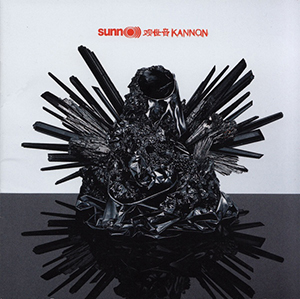 The length of time elapsed between Kannon and the last Sunn O))) album proper, Monoliths and Dimensions, is over six years and the longest gap in the band’s career. This pause is unsurprising given the grandiose stylistic decisions the last album reached as far as production goes: choruses, strings, and horns made for an artistic peak that stopped just short of crossing that fine threshold between epic drama and self-absorbed pretentiousness. Kannon in some ways is a reboot of the project, returning back to the foundational sound of Greg Anderson and Steven O'Malley and their massive wall of amps. But rather than a cliché "back to basics" move, it is a record informed by their legacy, as well as their recent collaborations with Ulver and Scott Walker, that displays strong and significant artistic growth and development.
The length of time elapsed between Kannon and the last Sunn O))) album proper, Monoliths and Dimensions, is over six years and the longest gap in the band’s career. This pause is unsurprising given the grandiose stylistic decisions the last album reached as far as production goes: choruses, strings, and horns made for an artistic peak that stopped just short of crossing that fine threshold between epic drama and self-absorbed pretentiousness. Kannon in some ways is a reboot of the project, returning back to the foundational sound of Greg Anderson and Steven O'Malley and their massive wall of amps. But rather than a cliché "back to basics" move, it is a record informed by their legacy, as well as their recent collaborations with Ulver and Scott Walker, that displays strong and significant artistic growth and development.
The most striking aspect of the album is its (relative) brevity:three songs, with a total running time of a bit longer than a half hour.Considering the sprawling nature of their previous work, it almost seems oddly succinct.Even though there is a sense of returning to their more simple records, conceptually at least, the record features a number of guests and collaborators, with familiar names showing up on the roster. "Kannon 1," besides the core of Anderson, O'Malley, and Attlia Csihar, sees Oren Ambarchi on oscillators and Randall Dunn adding synths.From its shimmering, albeit noisy opening, the opening moments make for a first impression of a sound less dark and dismal than their other work.
The overall sound on this piece is stripped back to emphasize the droning riffs, with the electronic elements kept to a tasteful accent.Csihar’s guttural, throaty vocals add an additional dissonant component that, like much of their work, acts as a recontextualized trope of heavy metal, deconstructed and used to a very different effect.But within the decimating chords and demonic growls, there is an additional layer of nuance that can be heard.Rather than just coming across as a big sludgy riff, the guitars create dense tonal clusters that rapidly vacillate between noise and clean tone.
"Kannon 2" has sharper, more forceful guitar throughout it, with considerably massive amounts of sustain and feedback lingering after each hit of the strings.Compared to the piece before, the sound is harsher, more serrated and abrasive.The vocals here have a more monastic, chant-like quality that balances out the harsher approach of the guitar.The droning, hypnotic sense of repetition is also expanded upon, and the trio of synth players here (Dunn plus Steve Moore and Rex Ritter) especially shines through in the song’s closing moments.
The final composition comes together as a brilliant culmination of what preceded it on the album.Squalling guitar is offset by a pleasant counter-melody, as simple chord progressions and sustained tones result a powerful and complex atmosphere.Csihar’s vocal approach bridges that chasm between metallic growl and near religious chant, and get to just the right level of drama and bombast without becoming too over the top and pompous.As the trio soldier on, the vocals and guitar hit a pure and melodic peak, before loosening up to conclude the album.Even amidst the bleak, metallic guitars and blackened noise, the parallels with sacred music by the likes of Arvo Pärt are not at all hard to hear.
Kannon is not quite the sound of Sunn O))) hitting the reset button, but instead an intentional step back as an album and arrangement, emphasizing the core sound Stephen O'Malley and Greg Anderson began with on The Grimmrobe Demos.This is a record that strips down the band to their essentials, but one that is informed by a decade and a half of recording and performance.For a band that honed their identity with anything but understated sub bass and simple, caveman like riffing, Kannon is an powerful work that is a complex, and at times extremely beautiful album.It has its own consistent feel and sound within their discography, but stands out with its terseness and depth, two things that are not always associated with their work, but apply perfectly here.
samples:
 
Read More
- Administrator
- Albums and Singles
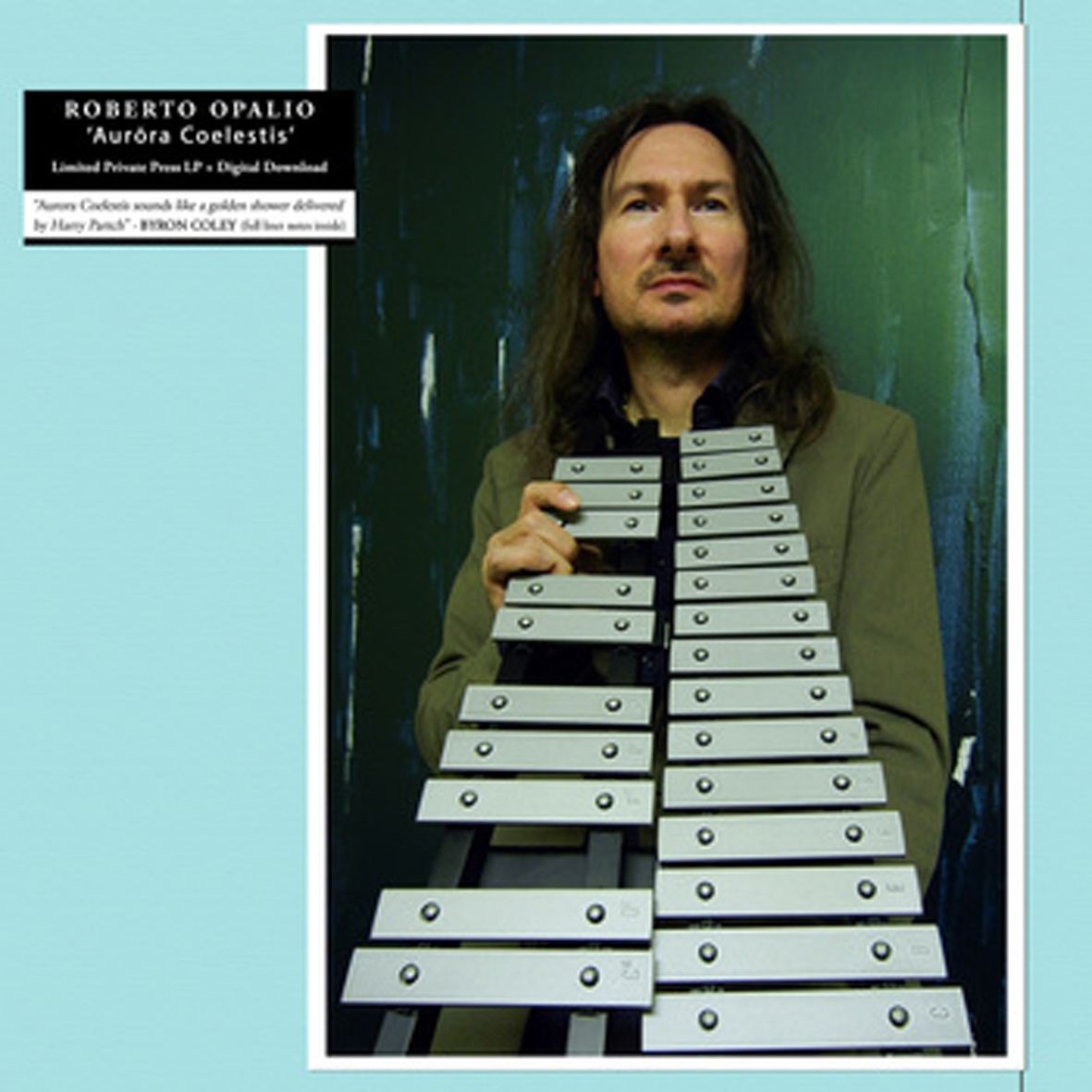 Roberto Opalio's latest solo opus is an intriguing companion piece to My Cat is an Alien's recent Abstract Expressionism for the Ears, achieving its own uniquely altered state in a much more spontaneous, stripped-down, and (comparatively) brief fashion. Although it also contains a shorter piece built around Roberto's processed voice, the clear raison d'être for Aurora Coelestis is the 30-minute title piece, a shimmering, dream-like tour de force birthed from perhaps the least likely of sources: a glockenspiel.  Aurora is certainly a more modest effort than anything that MCIAA has been up to lately, but it is unquestionably its own strange and unique entity with its own pleasantly warped reality.
Roberto Opalio's latest solo opus is an intriguing companion piece to My Cat is an Alien's recent Abstract Expressionism for the Ears, achieving its own uniquely altered state in a much more spontaneous, stripped-down, and (comparatively) brief fashion. Although it also contains a shorter piece built around Roberto's processed voice, the clear raison d'être for Aurora Coelestis is the 30-minute title piece, a shimmering, dream-like tour de force birthed from perhaps the least likely of sources: a glockenspiel.  Aurora is certainly a more modest effort than anything that MCIAA has been up to lately, but it is unquestionably its own strange and unique entity with its own pleasantly warped reality.
The idea of a deeply psychedelic solo glockenspiel album is certainly one that courts incredulity, but the instrument lends itself to the task at hand surprisingly well.  In fact, an album like this could have probably only be made with such an instrument, though it sometimes sounds an awful lot like a vibraphone in this instance (though higher in pitch).  Of course, Opalio does not only use a glockenspiel to weave his spell: the sounds are all filtered through his self-designed "alientronics," which adds a lovely blurring and softening effect to the rippling notes.  For the most part, "Aurora Coelestis" is a quavering, bleary thrum, but avoids ever becoming static or fully settled.  The overall effect is a subtle yet beguiling one, as it is not so much a plunge into a new lysergic plane of consciousness as it is a gentle (but significant) tweaking of reality as it currently exists.  Like ambient music, it does not particularly demand my direct attention, but it adds a shimmering patina of quivering surreality to my immediate surroundings whether I give it that attention or not.  That said, it also holds up quite well to deeper, more focused listening, resembling an accumulating mass of uncomfortably harmonizing whines from a field full of otherworldly crickets.  I cannot think of any other albums that provide that particular experience, so I will chalk that up as a definite success.
The 7-minute "Hic et Nunc" closes the album with a slightly different feel, as Roberto's disquietingly eerie and shifting vocal drones and swooping electronics evoke the feeling of strange lights floating above a remote forest.  In most other respects, however, it reprises the success of its predecessor, eschewing melody or rhythm in favor of achieving a unsettling, flickering, and drifting reverie.  If it has a fault, it is merely that it is comparatively short, so its spell does not quite have enough time to fully take hold.  Otherwise, it is every bit is unique and delightfully weird as its companion piece.  Admittedly, it took Aurora a bit longer to grow on me than the last few MCIAA albums (owing to its less overtly ambitious scope and relative quiet), but it is ultimately a singular, subtly absorbing, small-scale triumph that truly sounds like no one else.
 
Read More
- Administrator
- Albums and Singles

Anoice
The Black Rain
Anoice's first album for Important had a modest (but critically affectionate) impact upon its release. However, sales of the record have been steady & strong since it originally came out in 2006. Now, six years later we're pleased to finally offer The Black Rain, Anoice's reaction to both the darkness & hope that engulfed Japan after the 2011 earthquake, Tsunami & nuclear meltdown. Black Rain was written throughout 2011 and recorded in Tokyo and London. The Black Rain is both a reflection on disaster and a prayer for healing.
The structure of The Black Rain flows as an album full of preludes working up to the gigantic full band composition titled Finale. As this finale comes to a close the attentive listener is rewarded with a soft landing called Fall Asleep which brings brings the album to a close. Most of the arrangements
for The Black Rain are comprised of strings, piano and organ. Pianos were recorded at various locations including a hotel ruined by the earthquake.
Pieces from The Black Rain are inlcuded on a charity compillation titled More Hope For Japan and a Louis Vuitton Iphone application.
The Black Rain was originally inteded to be released in Spring of 2011 but the release was witheld due to the the title of the album and the provocative sadness, rage and hatred against apathy expressed in the compositions. The distribution of music throughout many districts of Japan was halted giving Anoice more time work on the record. Although the group did not originally set out to make a record which dealt with the theme of nuclear disaster everything changed after the tragic events of the March 11th.
TRACK LISTING
self-portrait
colder than thermite
ripple
tipsy dance
cat in the rain
white paper
drops
the end of something
finale
fall asleep
REVIEWS
If you're looking for a pleasant diversion, look elsewhere—this album was written by the Japanese quintet Anoice in the wake of the catastrophic earthquake, tsunami, and nuclear accident that devastated parts of coastal Japan in March of 2011. Presented as "both a reflection on disaster and a prayer for healing," Black Rain is quiet but intense, and while it is remarkably beautiful it's also poignant to the point of heartbreak. This group plays mostly acoustic instruments (piano, cello, viola, percussion, guitar) but also incorporates synthesizers and what sound like occasional samples into its compositions. At times those compositions are deceptively simple-sounding, and sometimes (as on the quiet and lovely "Ripple") they are genuinely simple. But they effectively convey a sense of both loss and hope, of contemplation and occasionally anger. The first eight tracks on the program build up to the appropriately-titled ninth track, "Finale," which is sonically big without quite lapsing into bombast, and emotionally powerful without lapsing into bathos. The album then ends with "Fall Asleep," a piece of nearly subliminal quietness and gentle beauty. Crisis often produces art, but not very often does it result in art this engaging.
All Music Guide 2012
Read More
- Administrator
- Albums and Singles
We are very proud to be releasing brand new lovesliescrushing material. Scott Cortez & Melissa Arpin-Duimstra deliver gorgeous washes of textured guitars & angelic ethereal vocals to create perfect dreamy summer drones. Everything was recorded in 2012.
Pt. I - Broken Aureate Echo
Pt. II - She Is Above The Clouds
Pt. III - A Bird Flew To The Sun
Stamped black bottom CDR, A7 silver envelopes, three 5"x7" prints & one vellum print. Each copy is handmade. Edition of 200.
If you don't know this band, do yourself a favor and read a bit about them - they've been around since the early 90s & they're one of TQA's biggest influences.
“Through their use of low tech means and focusing on the blending of guitar noise and electronic voice processing, lovesliescrushing can be seen as the early 'missing link' between the likes of Slowdive and Fennesz...works that contain an element of sonic mystery and still sound timeless." - Richard Chartier LINE
More information here.
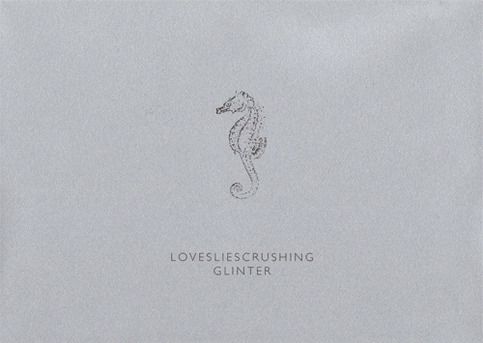
Read More
- Administrator
- Albums and Singles
Jon Mueller and James Plotkin first combined forces on Physical Changes, scorching the leading LP side of Mueller's 2009 multi-format collaborative investigation. Forging Mueller’s blistering percussion and rolling hills of drums with Plotkin's searing guitar and melting electronics, a sturdy alloy was formed. When both musicians were asked to perform at the Utech Records Music Festival in June 2011, at which they appeared as a duo, the pair spent the proceeding days spontaneously unfurling Terminal Velocity.
Recorded in rural Wisconsin just outside of Mueller's native Milwaukee, Terminal Velocity is an effort of concentration. On the brink of implosion, the duo reduces dense washes of percussion and guitar to thick crusts, at times deceivingly with a whispered intensity. Sizzling drums meet electronic warbles as two great forces restrain each other to a constant speed.
Mastered by Plotkin, cut direct to metal and pressed on 200g virgin vinyl, Terminal Velocity is presented in an edition of 500 copies. Packaged in a heavy Stoughton tip-on gatefold, the jacket is hand-numbered on the spine and features a textured paper to enhance Karlynn Holland's graphite drawings the album accompanies.
More information here.
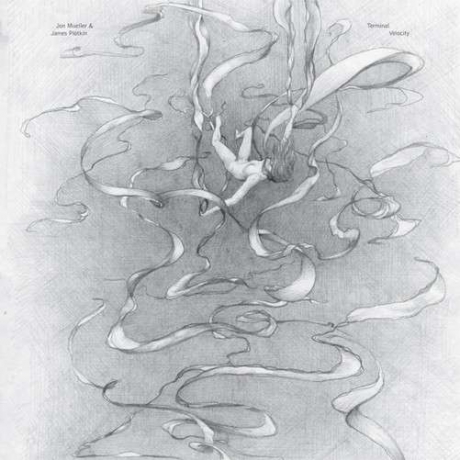
Read More
- Administrator
- Albums and Singles
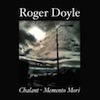 Every once in a while, a familiar artist takes me completely by surprise. One Sunday night, I was making the long drive home to Dublin from my then fiancée’s place in Northern Ireland. On the radio was the weekly contemporary music show on the national classical music station. This particular edition was dedicated to a work in progress by Roger Doyle; different segments being played with an interview with Doyle interspersed between them. I have always been fond of Doyle’s music but listening to parts of what would eventually become Chalant was a revelation. Built around old answering machine messages, Doyle weaved his own past through his music and combined bittersweet memory with an overreaching arc of life’s progress and the construction of the artist’s cannon. Throughout the next few days and weeks, the music and themes of the work resonated within my head. This was a deeply moving and thought-provoking composition and I could not wait to listen to the album properly.
Every once in a while, a familiar artist takes me completely by surprise. One Sunday night, I was making the long drive home to Dublin from my then fiancée’s place in Northern Ireland. On the radio was the weekly contemporary music show on the national classical music station. This particular edition was dedicated to a work in progress by Roger Doyle; different segments being played with an interview with Doyle interspersed between them. I have always been fond of Doyle’s music but listening to parts of what would eventually become Chalant was a revelation. Built around old answering machine messages, Doyle weaved his own past through his music and combined bittersweet memory with an overreaching arc of life’s progress and the construction of the artist’s cannon. Throughout the next few days and weeks, the music and themes of the work resonated within my head. This was a deeply moving and thought-provoking composition and I could not wait to listen to the album properly.
Just when Chalant had drifted from my mind, it suddenly came into existence again. It would be a little while before I would get to hear it completely, however. Once I got to sit down with the album, my first few listens were a combination of recollection and integration of the unheard material. It was as good as I had remembered and the concept had been fleshed out into a very robust whole. An opening volley of piano movements set the tone for the album; Doyle’s playing is poignant without being morbid or depressive. When the first voices appear, they are those of Doyle’s parents. Instead of momentous advice to Doyle, their words are the normal kind thoughts of caring parents. Doyle’s mother worries about her son’s health and his father lets him know about post that has arrived for him.
The feelings of being contacted from beyond the grave continue into the album’s middle section with a stunning vocal performance by the late Jonathan Philbin Bowman. Similar in tone to some of Philbin Bowman’s radio spots where he would offer some thoughts for the day, "Coat-hanger Kisses" was a freer, more poetic look at his world which has more in common with a Joycean stream of consciousness than his more familiar (to the public at least) journalistic style. Doyle gives Philbin Bowman a backing that he deserves, the rolling delivery of the words matched by tidal piano lines. The fact that this was hardly a planned piece (Philbin Bowman passed away in 2000) but it works like the two of them had sat down and written it together.
Despite the album’s subtitle of Memento Mori, there is more to Chalant than death, even if mortality stalks the various melodies throughout the album. Doyle explores the concept of family and the process of passing the torch from generation to generation with his focus on his own son’s life. Paavo Evans-Doyle appears at several points, starting with his endearing messages on "Back in Time" where, as a young boy, he tries to leave more and more inventive messages on his father’s answering machine. Placed in between the messages of Doyle’s parents and Philbin Bowman, Paavo represents another loss but this time it is a loss of innocence and the knowledge that this charming little boy will fly the nest at some point. The arrival of another generation is heralded on "Birth" though this time the answering machine has been replaced with text messages being read by the computer; the indifferent sterility of the computer at odds with the fecund event of a new human life.
The final thread running through Chalant is the subject of all these messages: Doyle himself. Through the lens of these recordings and these pieces, Doyle revisits important milestones in his career from early correspondence with the Groupe de Musique Expérimentale de Bourges (related here by his father) to his live soundtrack for a stage version of Oscar Wilde’s Salomé at Dublin’s legendary theater, The Gate. Throughout "Salomé at The Gate," he weaves a narrative around the event from being accepted for the show to its teething problems, favorable reviews and backstage politics, all brought together by Doyle to give a flavour of the excitement of the time.
Doyle’s self-reflection is not restricted to his professional development as he studies his own mortality through similar methods. "Back from Hospital" features many of his friends and family asking about a recent illness and the process of aging is examined on the aforementioned "Birth" as Doyle becomes a grandfather. Chalant’s final piece, "Departure," actually immediately follows "Birth." It is an open-ended piece, though at a slower pace to much of the rest of the album. It hints at an eternity in its various permutations but the inescapable finality of silence as the CD stops is as metaphorical as it is unavoidable.
samples:
 
Read More
 Every once in a while, a familiar artist takes me completely by surprise. One Sunday night, I was making the long drive home to Dublin from my then fiancée's place in Northern Ireland. On the radio was the weekly contemporary music show on the national classical music station. This particular edition was dedicated to a work in progress by Roger Doyle; different segments being played with an interview with Doyle interspersed between them. I have always been fond of Doyle's music but listening to parts of what would eventually become Chalant was a revelation. Built around old answering machine messages, Doyle weaved his own past through his music and combined bittersweet memory with an overreaching arc of life's progress and the construction of the artist's cannon. Throughout the next few days and weeks, the music and themes of the work resonated within my head. This was a deeply moving and thought-provoking composition and I could not wait to listen to the album properly.
Every once in a while, a familiar artist takes me completely by surprise. One Sunday night, I was making the long drive home to Dublin from my then fiancée's place in Northern Ireland. On the radio was the weekly contemporary music show on the national classical music station. This particular edition was dedicated to a work in progress by Roger Doyle; different segments being played with an interview with Doyle interspersed between them. I have always been fond of Doyle's music but listening to parts of what would eventually become Chalant was a revelation. Built around old answering machine messages, Doyle weaved his own past through his music and combined bittersweet memory with an overreaching arc of life's progress and the construction of the artist's cannon. Throughout the next few days and weeks, the music and themes of the work resonated within my head. This was a deeply moving and thought-provoking composition and I could not wait to listen to the album properly.
- Administrator
- Albums and Singles
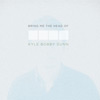 After last year’s Ways of Meaning, I have a hard time hearing Kyle Bobby Dunn the way I once did. There was something dark and deceiving about that record, something that didn’t show up in the music so much as it did in the subtext, but which changed the way the music felt nonetheless. On his latest album, a two disc set with over two hours of new music, Kyle continues to complicate his message. His ascetic approach is intact and as beautiful as ever, but the same enigma that haunted his last album is all over this record, too, and it’s even more noticeable.
After last year’s Ways of Meaning, I have a hard time hearing Kyle Bobby Dunn the way I once did. There was something dark and deceiving about that record, something that didn’t show up in the music so much as it did in the subtext, but which changed the way the music felt nonetheless. On his latest album, a two disc set with over two hours of new music, Kyle continues to complicate his message. His ascetic approach is intact and as beautiful as ever, but the same enigma that haunted his last album is all over this record, too, and it’s even more noticeable.
Dunn’s talent for the economical use of harmony and color is so developed that it can be difficult to see past. Abrasive, ugly, or unusual sounds always inspire audiences to ask questions, but pretty ones get an easy pass, as if their prettiness were sufficient reason to use them. Whether by design or accident, Kyle’s music takes advantage of that fact, or suffers from it, depending on your point of view.
Since I first started listening three years ago, his music has become more layered, but not because he has added more instruments or somehow changed his approach. Rather, the added dimensions are the result of his persistent use of the same materials he has always used, plus some help from contextual details like album and song titles. He has become more familiar with the pitches and colors his music employs, and also more familiar with the moods they evoke, so his ability to manipulate those ingredients has increased substantially. As a result, his music has also become more asymmetrical and severe. On a song like "Ending of All Odds," I hear pretty tones and bittersweet harmonies, but the overall effect is more resigned and ghostly. "Parkland" is made up of mostly warm and enormous tones that stretch on for minutes at a time, but it feels impersonal in places and cold in others. Kyle’s music may be pretty, but I don’t think his pretty music always results from equally pretty inspiration. In the bright, swollen drones he produces, all kinds of nooks and crannies exist, and they are populated by moments of dissonance, shadow, and trepidation. Get too caught up in how attractive the music sounds, or in how relaxing it is, and those moments can go by unnoticed. Once these moments are heard, they are impossible to overlook, and they add a great deal of complexity to his work.
The big, spacious tones that Kyle is best-known for make that kind of subtlety possible in the first place. On this record, they also mimic some of the subject matter with which Kyle is working. Of the 15 songs on Bring Me the Head, at least five are references to locations around Alberta, Canada, and I think one of them ("Complétia Terrace") was recorded in Banff National Park. His decision to name his songs for these places, along with the length of the album, puts his use of scale, space, and time in the spotlight, rather than the pitches he selects. It is more natural, after all, to describe places in terms of their space and scale rather than by means of pitch.
This separation of space, time, and pitch in his music might also explain why his songs can sound one way, but feel almost diametrically opposite. If he is composing in terms of space first and pitches second, then it is easy to imagine each element developing independently of the other. However he does it, when Kyle puts all his elements together, the result is some of the most beautiful and ambiguous music I have heard this year, and easily one of the best albums of its kind.
samples:
- Low Point has made every song from this album available for streaming on their Bandcamp site. You can listen to every song by visiting here.
 
Read More
- Administrator
- Albums and Singles
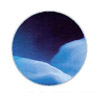 This three track EP given to attendees at a live performance in Germany earlier this year, is now available for those who did not attend. Each of the legendary artists contributes one piece to this all-too-brief release, which comes together just as brilliantly as if it were a stand alone release.
This three track EP given to attendees at a live performance in Germany earlier this year, is now available for those who did not attend. Each of the legendary artists contributes one piece to this all-too-brief release, which comes together just as brilliantly as if it were a stand alone release.
Von Euler-Donnersperg’s "Die Schnarrmaus des kleinen Fritz" opens, using what sounds like a dripping faucet to construct an insistent, continuous rhythm swathed in metallic echo.Eventually it transitions to a jumpy, cut-up collage of metallic rattling and percussion before submitting to a digital mangling at the end.The result is a unique combination of texture and rhythm, never fully falling into either end of the spectrum
Köner's "Le Bateau Ivre" is the shortest piece, clocking in a little under four minutes.While it has bit less of the frigid, tundra-like sound of his usual style, it still trades in that sparse, but melodic use drone that he uses so well.Obscured by shadow, there is a beautiful melody hiding, but it never fully appears.
Asmus Tietchens' "L10RA" takes up more than half of this EP, which, as a self-confessed Tietchens fan boy, made me quite happy.Opening with obscured layers of static, the subtlety is upset by understated surges of time-worn noise, sounding like lost recordings of early gramophones appearing out of thin air.He continues this dynamic, pushing the mix into a louder, more forceful one before pulling back and letting space in.It has that distinct Tietchens sound, which is hard to qualify but is undeniably brilliant.
Even disconnected from the performance (which surely was brilliant given the lineup), this brief mini album stands on its own as a compilation of new material from three of the most respected sound artists currently active today.
samples:
- Ditterich von Euler-Donnersperg - "Die Schnarrmaus des kleinen Fritz"
- Asmus Tietchens - "L10RA"
- Thomas Koner - "Le Bateau Ivre"
 
Read More


